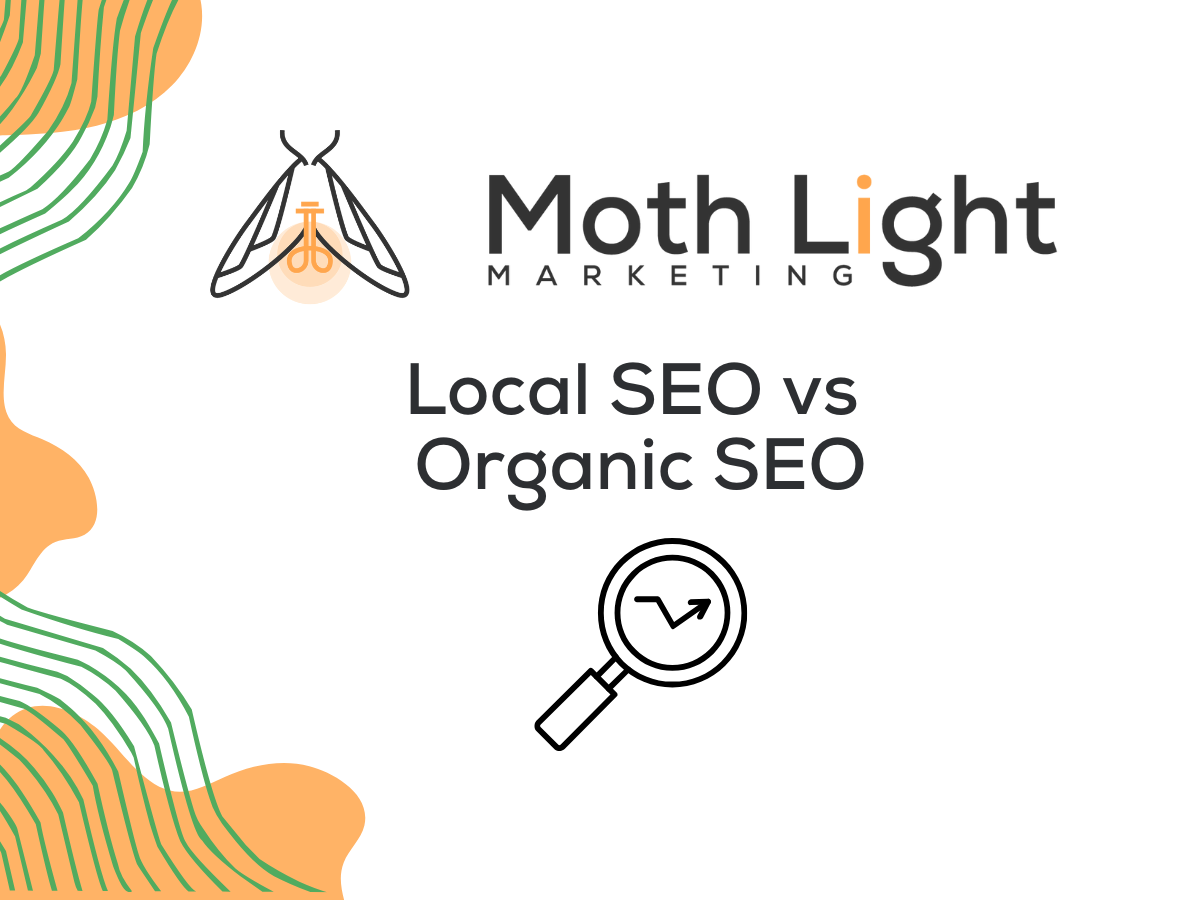When most people hear the term “SEO,” they think it’s one big strategy. In reality, there are several branches of SEO, each with its own purpose. Two of the most important for small and medium-sized businesses are Local SEO and Organic SEO.
While they both aim to improve your visibility in Google search results, they do it in different ways — and knowing the difference can help you decide where to put your time and marketing budget. In this post, we’ll break down what each one means, how they differ, and how to choose the right approach for your business.
What Is Organic SEO?
Organic SEO is all about improving your website’s visibility for searches that aren’t tied to a specific location. It’s designed to attract a broad audience — whether that’s regional, national, or even global.
Examples:
- An ecommerce store ranking for “best insulated water bottles”
- A blog post ranking for “how to reduce energy costs”
- A software company ranking for “time tracking tools for small business”
Key tactics include:
- On-page optimization (titles, meta descriptions, headings)
- Keyword research and targeting
- Regular content creation (blog posts, guides, videos)
- Building high-quality backlinks
- Improving site speed and technical SEO
Best for: Businesses that want to attract customers from a wide area, such as online stores, service providers with national reach, or content creators targeting broad topics.
What Is Local SEO?
Local SEO is laser-focused on helping your business appear in search results for a specific geographic area. If you serve customers in person — whether that’s in a store, an office, or their home — Local SEO is how you make sure they can find you.
Examples:
- A plumber appearing for “emergency plumber near me”
- A coffee shop ranking for “best lattes in Charleston, SC”
- A dentist showing up in the Google Map Pack for “dentist in Nashville”
Key tactics include:
- Optimizing your Google Business Profile
- Building and maintaining local citations (directory listings)
- Targeting location-based keywords (“city name + service”)
- Gathering and responding to positive reviews
- Creating location-specific landing pages
Best for: Brick-and-mortar shops, restaurants, local service providers, and professionals with a physical location or defined service area.
Key Differences Between Local SEO and Organic SEO
Here’s a quick side-by-side breakdown to make it easier:
| Factor | Local SEO | Organic SEO |
|---|---|---|
| Audience | Local customers in a specific area | Regional, national, or global |
| Search Results | Google Map Pack + local organic results | Organic search results only |
| Keywords | Location-based (“near me,” city names) | Non-location-specific |
| Tools & Tactics | Google Business Profile, citations, reviews | Content creation, backlinks, technical SEO |
| Best For | Brick-and-mortar and service-area businesses | National brands, ecommerce, bloggers |
How Local and Organic SEO Can Work Together
It’s not always an either/or situation. Many businesses benefit from both:
- A local boutique that also sells products online can use Local SEO to drive foot traffic and Organic SEO to sell nationally.
- A service provider like a landscaper can use Local SEO to attract nearby customers while building Organic SEO content to grow brand authority.
When done together, they create a stronger online presence, increasing both visibility and credibility.
Which One Should Your Business Focus On?
Here’s a quick guide:
- Prioritize Local SEO if you rely on foot traffic or local service calls.
- Prioritize Organic SEO if you want to reach beyond your local market.
- Invest in both if you want to grow locally and expand your reach over time.
If you’re unsure where to start, the right choice often depends on where your customers are and how they search for your products or services.
How Moth Light Marketing Can Help
At Moth Light Marketing, we help small and medium-sized businesses find the right mix of Local and Organic SEO to meet their goals. Whether you need to dominate local “near me” searches or grow your audience across the country, we’ll create a budget-friendly, tailored strategy to get you there.
Our small, experienced team works hands-on with every client — no cookie-cutter packages, no disappearing acts. Just real, measurable growth.

